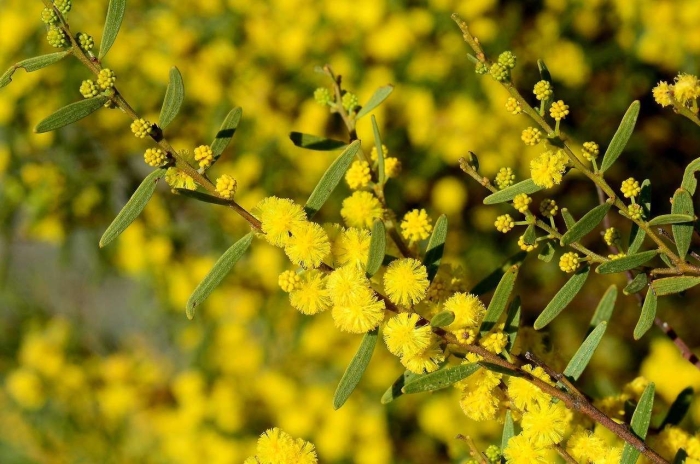Mallee Wattle
(Acacia montana)
Mallee Wattle (Acacia montana)
/
/

gmgoods
CC BY 4.0
Image By:
gmgoods
Recorded By:
Copyright:
CC BY 4.0
Copyright Notice:
Photo by: gmgoods | License Type: CC BY 4.0 | License URL: http://creativecommons.org/licenses/by/4.0/ | Rights Holder: gmgoods | Publisher: iNaturalist | Date Created: 2015-09-10T16:21:28Z |
























Estimated Native Range
Summary
Acacia montana, commonly known as Mallee Wattle, is a shrub endemic to the semi-arid regions of southeastern Australia, particularly in New South Wales and Victoria. It is often found in dry sclerophyll forests and mallee communities, which are characterized by eucalypt species that have adapted to survive in arid environments with poor, infertile soils. Mallee Wattle typically grows to a height of 2-5 meters with a similar spread, and it has a multi-stemmed habit with smooth, reddish-brown bark.
The plant is noted for its phyllodes, which are modified leaf stems that appear leaf-like, are flexible, smooth, and often have a triangular cross-section. These phyllodes perform the function of leaves and are an adaptation to conserve water. Mallee Wattle blooms in late winter to spring, producing small, cream-colored flower clusters that are globular in shape and quite showy. The flowers are followed by seed pods that are also of interest in the landscape. This shrub is valued for its drought tolerance and ability to adapt to a range of soil types, from sandy to loamy. It is used for revegetation projects, as a screen or hedge, and in native plant gardens for its attractive foliage and flowers. Mallee Wattle prefers full sun to part shade and requires well-drained soils. It is relatively low-maintenance but can be susceptible to root rot if overwatered.CC BY-SA 4.0
The plant is noted for its phyllodes, which are modified leaf stems that appear leaf-like, are flexible, smooth, and often have a triangular cross-section. These phyllodes perform the function of leaves and are an adaptation to conserve water. Mallee Wattle blooms in late winter to spring, producing small, cream-colored flower clusters that are globular in shape and quite showy. The flowers are followed by seed pods that are also of interest in the landscape. This shrub is valued for its drought tolerance and ability to adapt to a range of soil types, from sandy to loamy. It is used for revegetation projects, as a screen or hedge, and in native plant gardens for its attractive foliage and flowers. Mallee Wattle prefers full sun to part shade and requires well-drained soils. It is relatively low-maintenance but can be susceptible to root rot if overwatered.CC BY-SA 4.0
Plant Description
- Plant Type: Shrub
- Height: 6-13 feet
- Width: 6-10 feet
- Growth Rate: Moderate
- Flower Color: Yellow
- Flowering Season: Winter, Spring
- Leaf Retention: Evergreen
Growth Requirements
- Sun: Full Sun, Part Shade
- Water: Low
- Drainage: Medium, Fast
Common Uses
Bird Garden, Drought Tolerant, Erosion Control, Hedges, Low Maintenance, Showy Flowers
Natural Habitat
Semi-arid regions of southeastern Australia, particularly in New South Wales and Victoria, within dry sclerophyll forests and mallee communities
Other Names
Common Names: Mountain Wattle, Rough-barked Wattle
Scientific Names: , Acacia montana, Acacia clavata, Acacia montana var. montana, Acacia montana var. psilocarpa, Racosperma montanum,
GBIF Accepted Name: